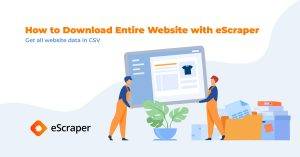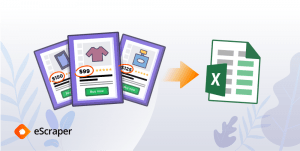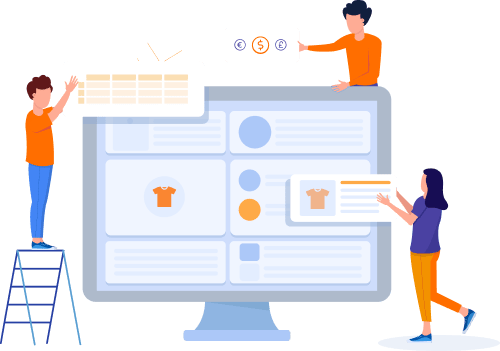Home » Useful Articles »
Web scraping eCommerce websites: tips to get usable data

Web scraping eCommerce websites has a number of peculiarities. Often, listed products have variations (like options available in the drop-down) that are actually separate products that must be extracted accordingly.

If scraped products are to be imported to a store, the file structure must be compatible with the shopping cart import tool. These and other moments must be considered at the start so that you could get complete data and was able to use it for your needs.
Below you will find an instruction on how to scrape data from an eCommerce website using eScraper, a data extraction service.
How to get high-quality data upon web scraping eCommerce websites:
- Provide a website link
- List the data that you want to extract
- Specify your target platform (where you want to import the data to)
- Get a sample free file and a quote for the full data extraction
- Get the entire data ready for import
- Update product information on a schedule
1. Specify a source website
To scrape a stand-alone eCommerce site, copy its URL and paste it into the free scrape form.
If you want to scrape data from a store hosted on Amazon, eBay, or Facebook, copy the URL of this specific store or seller. In case a website’s content is available by a login, provide any website’s link and login details.
2. List the data that you want to extract
Most probably, you’ll want to extract the following data:
- Categories with subcategories
- Product names
- Product description and short description
- Product variations
- Images of categories, products, and variations
- Brands
- Reviews with ratings
- Website data in other languages
- Product codes (SKU, UPS, EAN), etc.
Specify if the website you want to scrape has any peculiarities that must be taken into account. For example, there can be variations with their own SKUs, descriptions, and images.
3. Specify your target shopping cart (where you want to import data to)
We can put the extracted data as is and provide it in a simple CSV or Excel file. Also, you can request a file to be compatible with your target platform. Below you can see the examples of WooCommerce, Shopify, and Prestashop import files. These files can be directly imported via shopping carts back-ends:
WooCommerce import file sample:
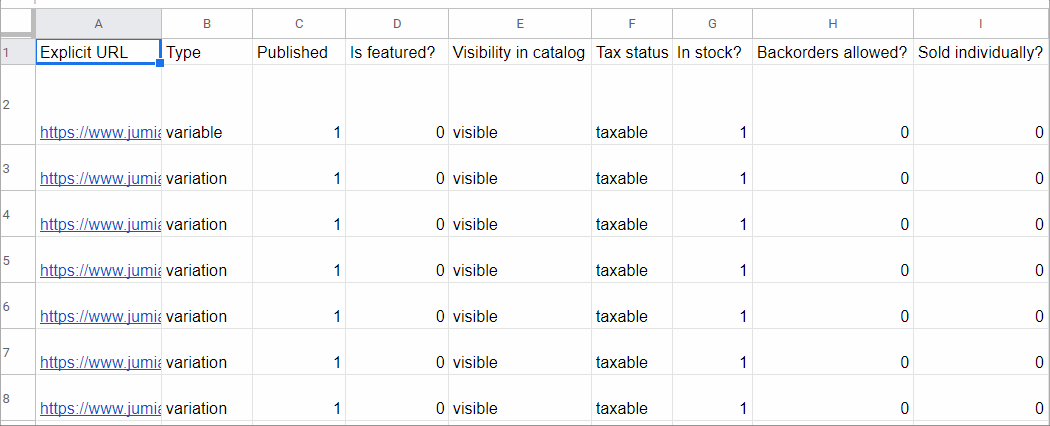
WooCommerce import file with scraped listing
Shopify import file sample:
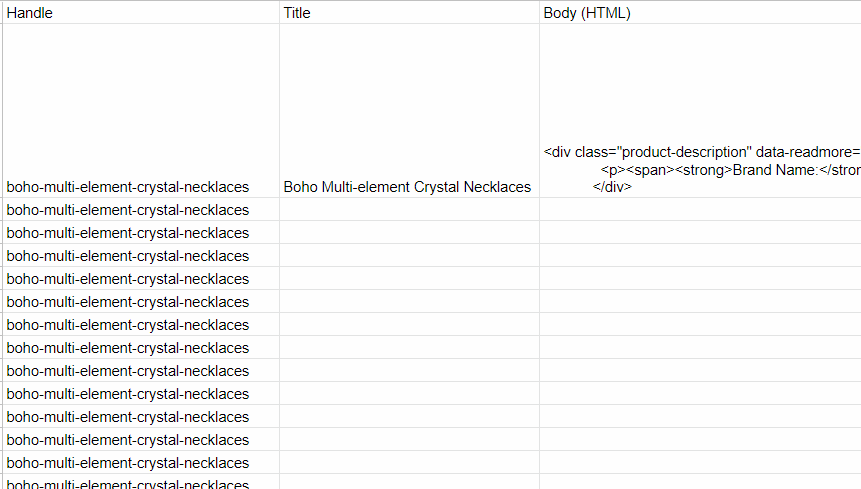
Shopify import file with scraped listings
PrestaShop import file sample:
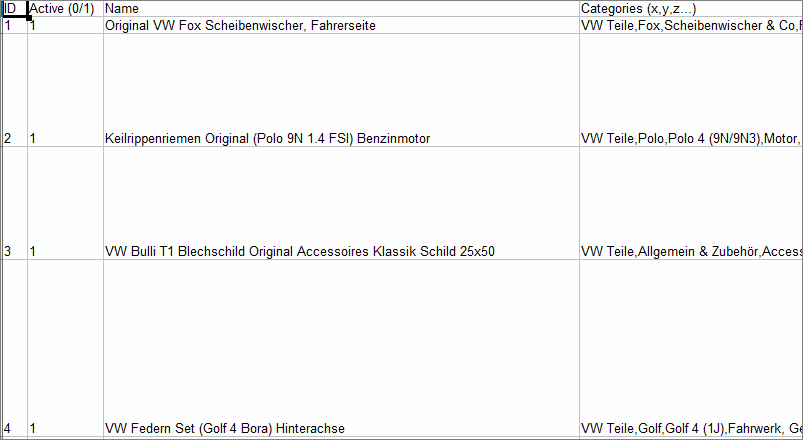
PrestaShop import file with scraped listings
As you can see, each file contains a set of fields required by a specific shoppings cart. Having a native import file will allow you to create products with variants, images, descriptions, and other product details.
4. Get a sample free file and a quote for the full data extraction
A sample file with 100 rows will be sent to your email within 24 business hours. You will have an opportunity to review it, import it to your target platform to check how the data looks. If you spot that some data is missing, we’ll ask you to take a screenshot of this data on the source website. If you want to split or merge some columns, tell us what exactly data must be edited.
Also, along with the test file, you’ll receive a quote for the entire data. How the price is calculated? The price is based on the number of lines in the result file. Thus, if a product has 7 variations, there will be 8 lines in the file: 1 parent product and 7 variations. Having received a quote, you’ll be able to pick an appropriate pricing plan.
5. Get scraped eCommerce data ready for import
When you’re completely satisfied with the file structure, you can proceed with the payment and get the entire data. If you ordered the file in a certain format for import, you’ll be able to upload it directly without any adjustments.
6. Scheduled data extraction: best price scraping, special price scraping
If you need to get the latest data from the website scraped before or update product listings in the future (price, quantity, availability) you can order a subscription service. Subsequent scraping of the same website would cost less than initial scraping.
